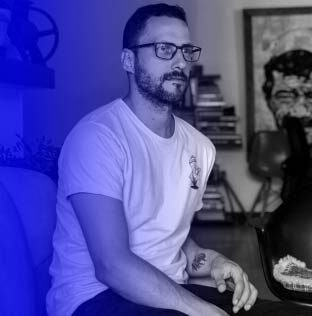Cartagena sits on the northern coast of Colombia, on the shores of the Caribbean Sea.
One of its main bodies of water is the Bay of Cartagena, which in turn is geographically, economically and socially connected with areas and geographical features such as Tierra Bomba Island, the Rosario Islands -where Isleta is located- and the Canal del Dique (Levee Channel), an artificial bifurcation of the Magdalena River.
The Colombian Caribbean is home to nearly 90% of the country’s reef area, according to research by EAFIT University.
From 2009 to 2021, about 11,700 km2 of the world’s coral reefs (14%) have been lost because of climate change consequences, such as increasing sea surface temperature due to the global emission of greenhouse gases.
Corals live symbiotically with microscopic algae that give them color, among other features. These are expelled from the corals in response to the stress generated by rising sea temperatures, causing coral bleaching and subsequent death if temperatures do not decrease.
Climate change, sediments and discharges of pollutants, human activities such as pollution, poor waste management, overfishing, mass tourism and increased infrastructure in coastal areas are destroying the corals of the Bay of Cartagena.
The primary sources of contamination in the Bay area are sediments and pollutants brought by the Canal del Dique, discharge of sewage, industrial discharges from the Mamonal port and El Bosque areas, and port activity (oily and hydrocarbon waste).
These sediments damage the marine ecosystem in different ways, including the decrease of dissolved oxygen, a crucial element for the reproduction and growth of marine organisms.
According to fishers from La Isleta, a community of nearly 60 native people who make their living from tourism and fishing, the number of fish harvested has declined in recent years.
Catching 10 to 15 fish can now take them all day, a figure they used to collect in two hours of fishing.
The decline of the fishery resource may be related to industrial overfishing and low dissolved oxygen in the water, as well as other factors such as chemical, oil and sewage spills.
Metals such as chromium, copper, nickel and mercury are present in the sediments of the Bay, with average concentrations above potential impact levels. This affects the marine ecosystem, apart from hurting the populations that consume fish and other organisms in these areas.
Such pollutants can extend their radius to the Rosario and San Bernardo islands, an ecosystem where the country’s most valuable reef formations, mangrove forests, seagrasses, fishes and invertebrates are found.
A number of the activities that affect the ecosystem, such as overfishing, poor waste management and increased infrastructure, are a consequence of unbridled tourism in the area.
The Bay of Cartagena is the recipient of about 90% of the industrial and domestic waste generated along the city’s coastline.
According to researcher Ostin Garcés, up to 8,000 microplastics per liter of water can be found on the Caribbean and Pacific coasts, in addition to 1,000 microplastics per square meter of beach.
The Bay’s water renewal process is very slow, it can take up to three months, but the water that washes in is just as polluted as the water that washes out.
Until 2020, in Cartagena’s Mamonal industrial complex, there were about 260 companies operating, most of them involved in petrochemical production, and industrial firms handling heavy metals, according to the Nuevo Siglo.
On several occasions, the Environmental Public Establishment has temporarily suspended activities of companies in the area because of polluting practices, such as the discharge of water containing hydrocarbons. Nonetheless, the incidents are recurrent and the companies continue with their discharges, according to the media outlet Alerta Caribe.
Project Basic scientists also discovered the city is sinking due to climate change, oil, gas and subsurface soil extraction, and the settlement of several areas that are on top of at least 45 active mud volcanoes. According to the Mayor’s Office of Cartagena, Bocagrande is the fastest sinking area.

Esteban Vanegas
Colombian photographer and photo editor. His work focuses on documentary and journalistic narratives dealing with topics such as human impact on the environment, urban conflict in Medellín and human migration in Colombia. For five years he was editor-in-chief of photography at El Colombiano, a national media outlet. In 2021, he served as jury member for the World Press Photo in the Environment category.. He is currently working as a freelance photographer for organizations such as IOM, Bloomberg, Liberation, Amazon Conservation Team, the UN Verification Mission in Colombia, among others.